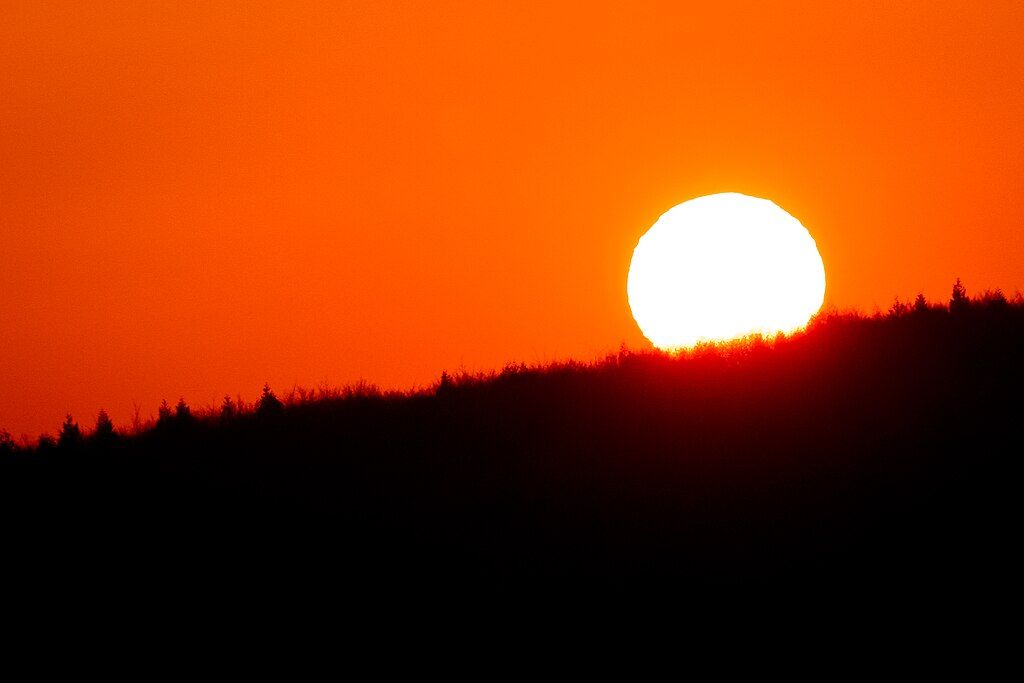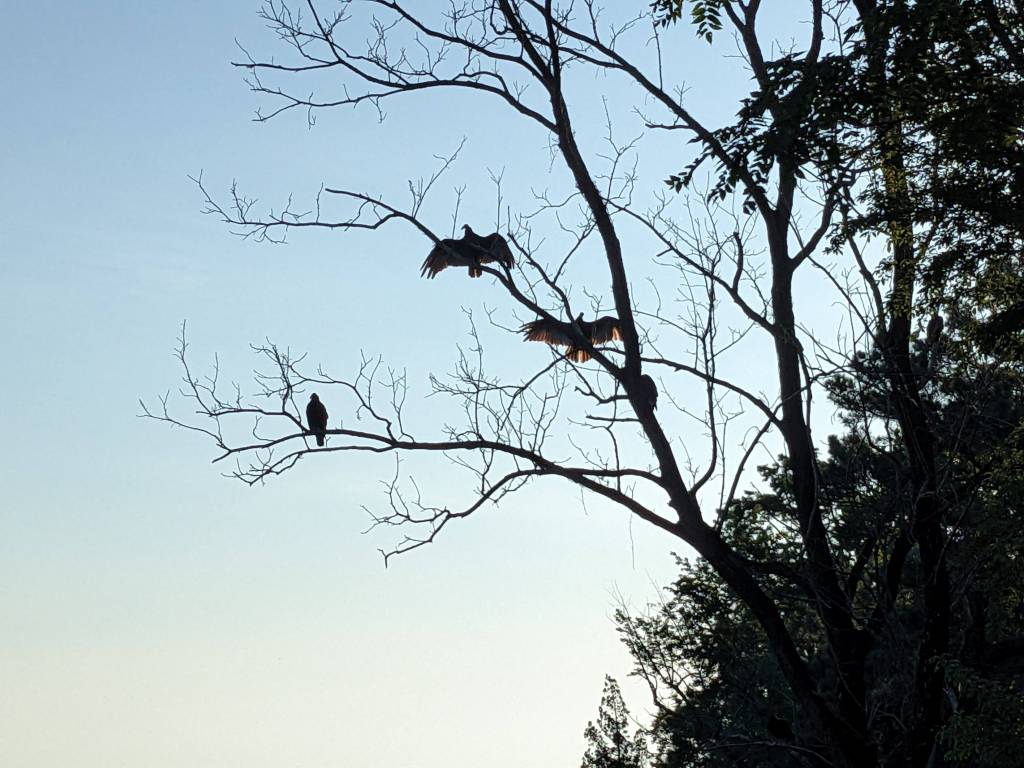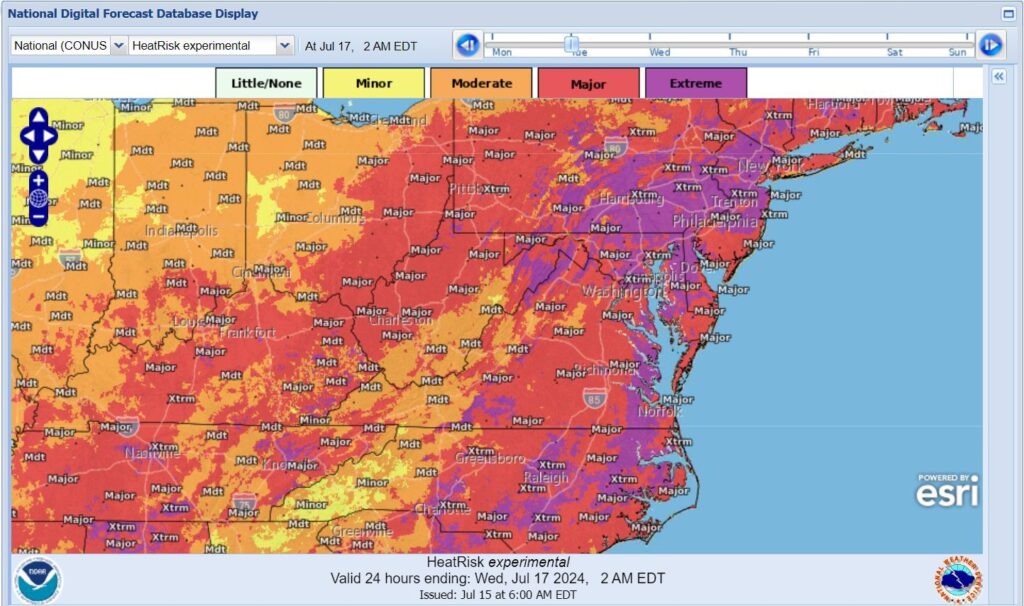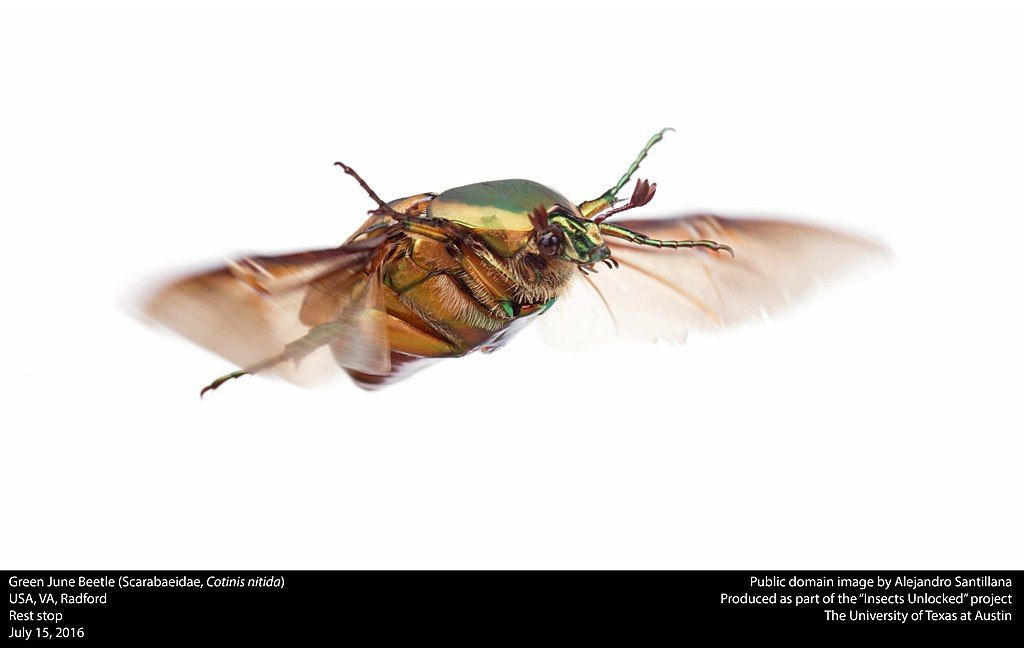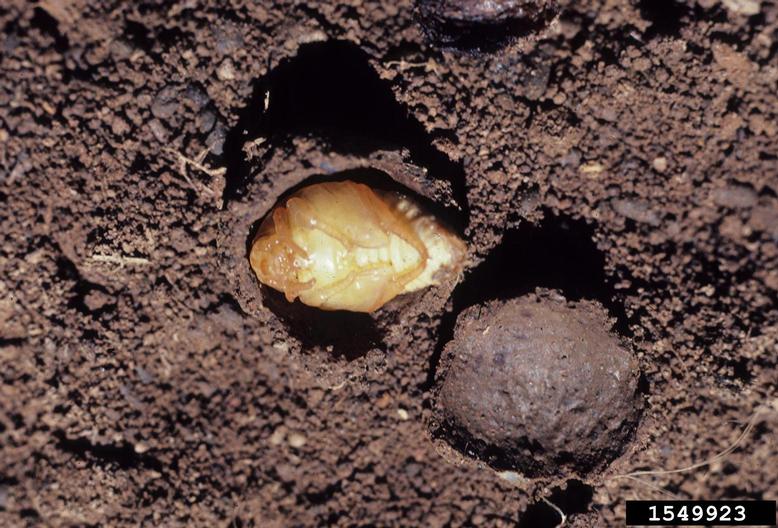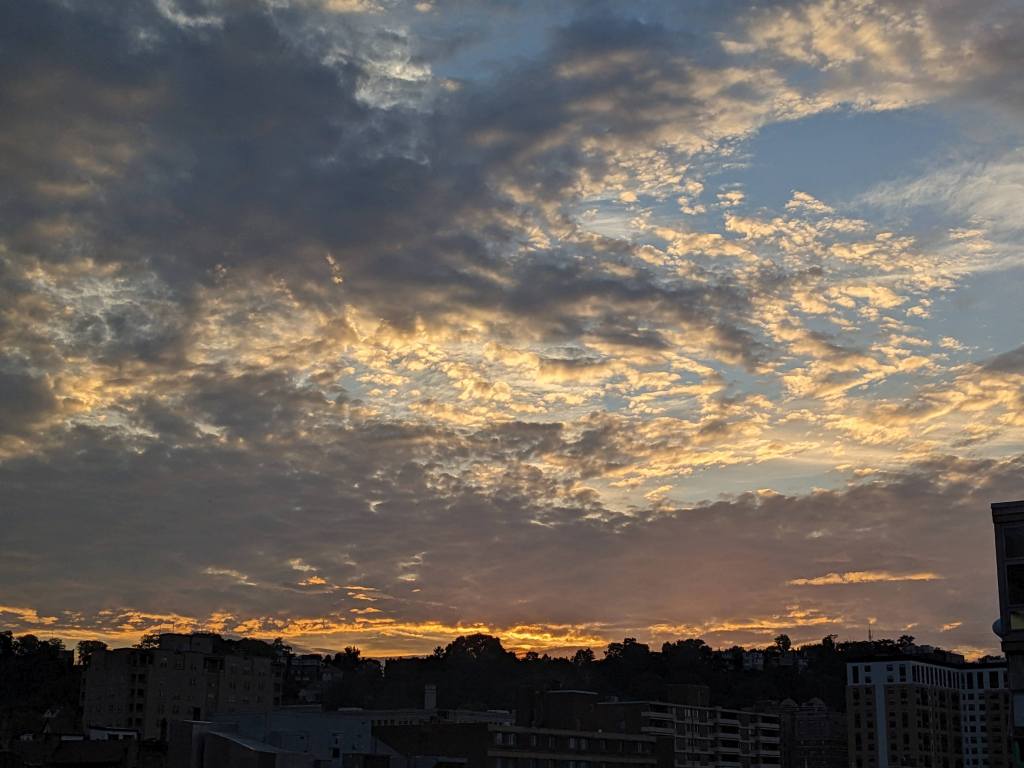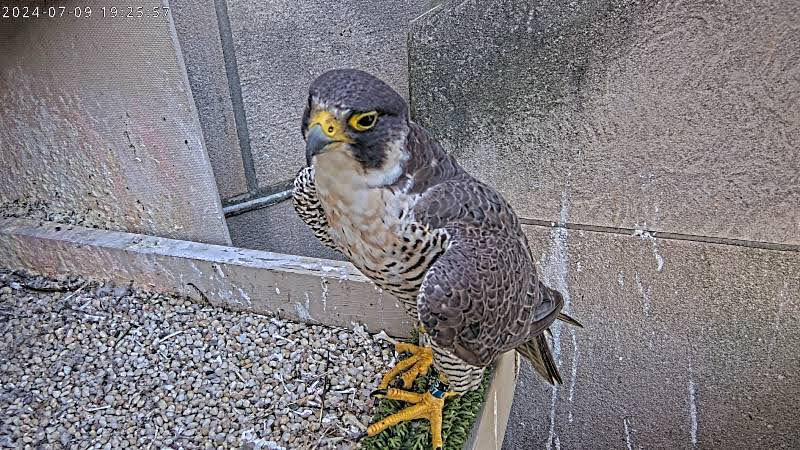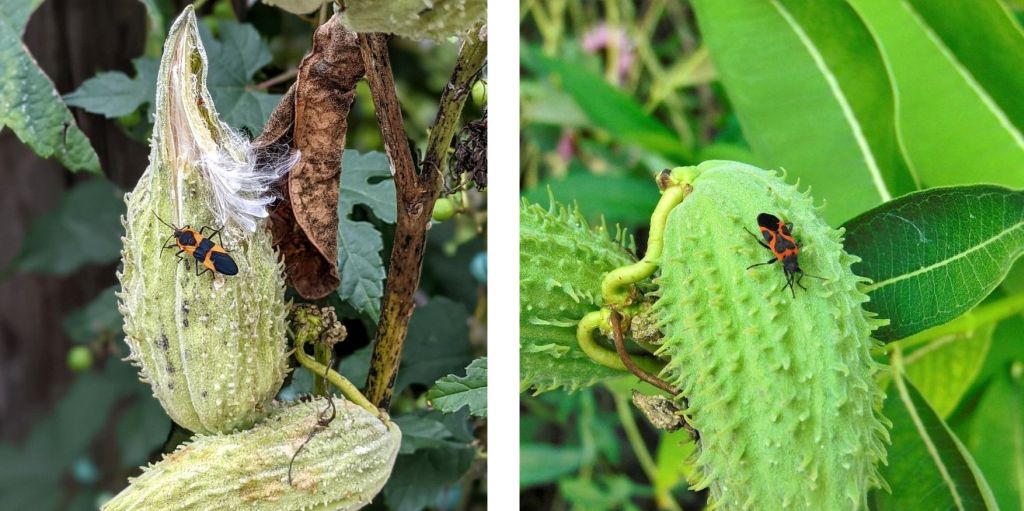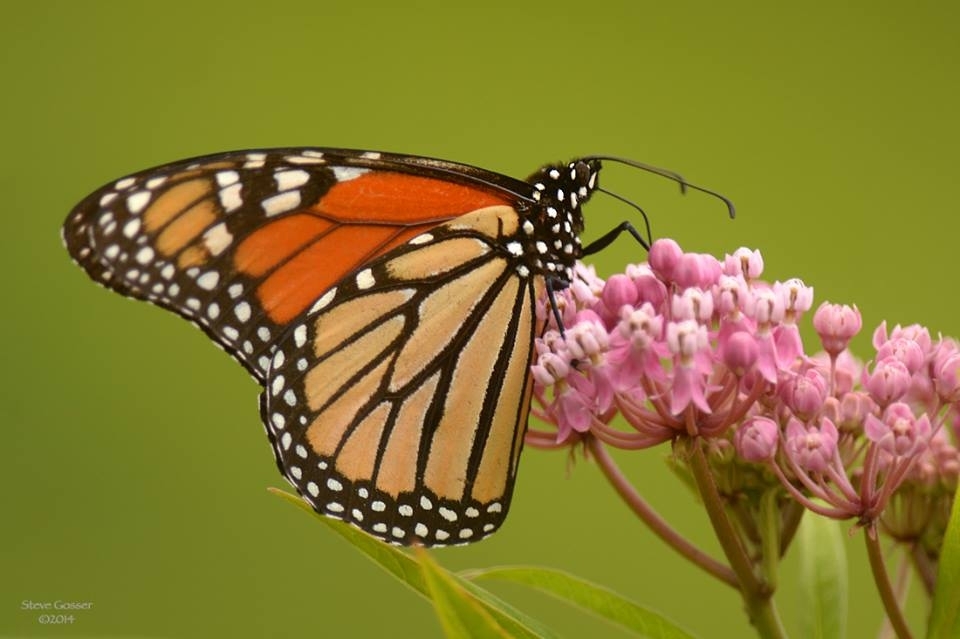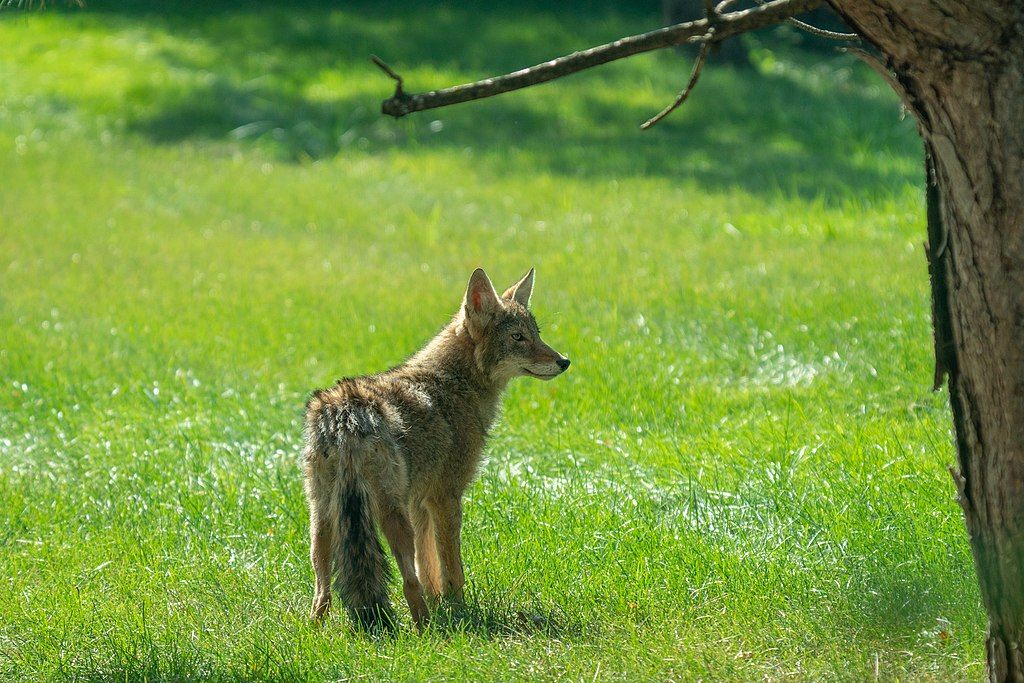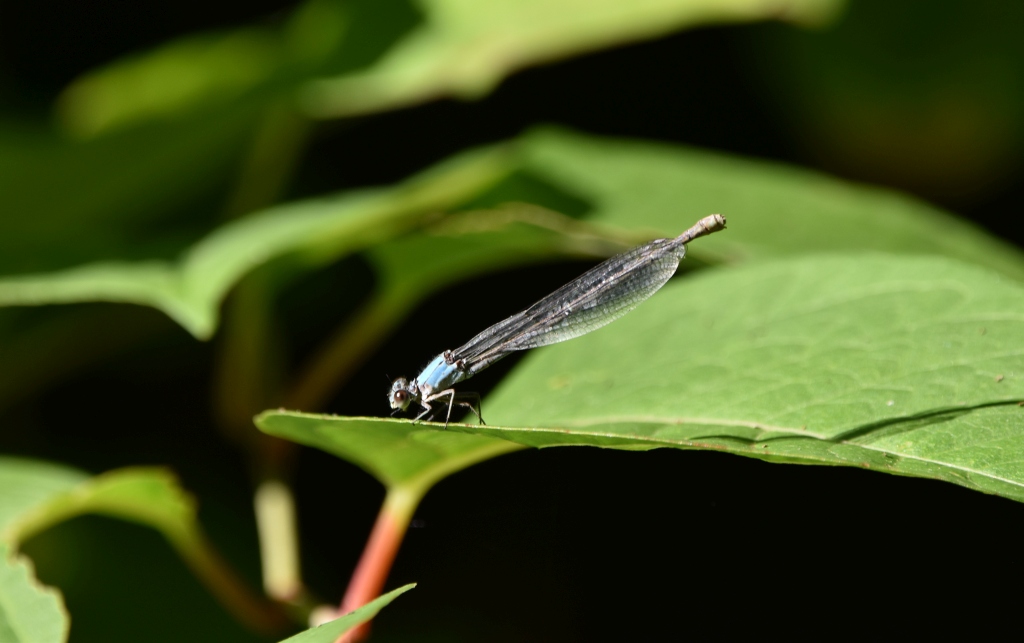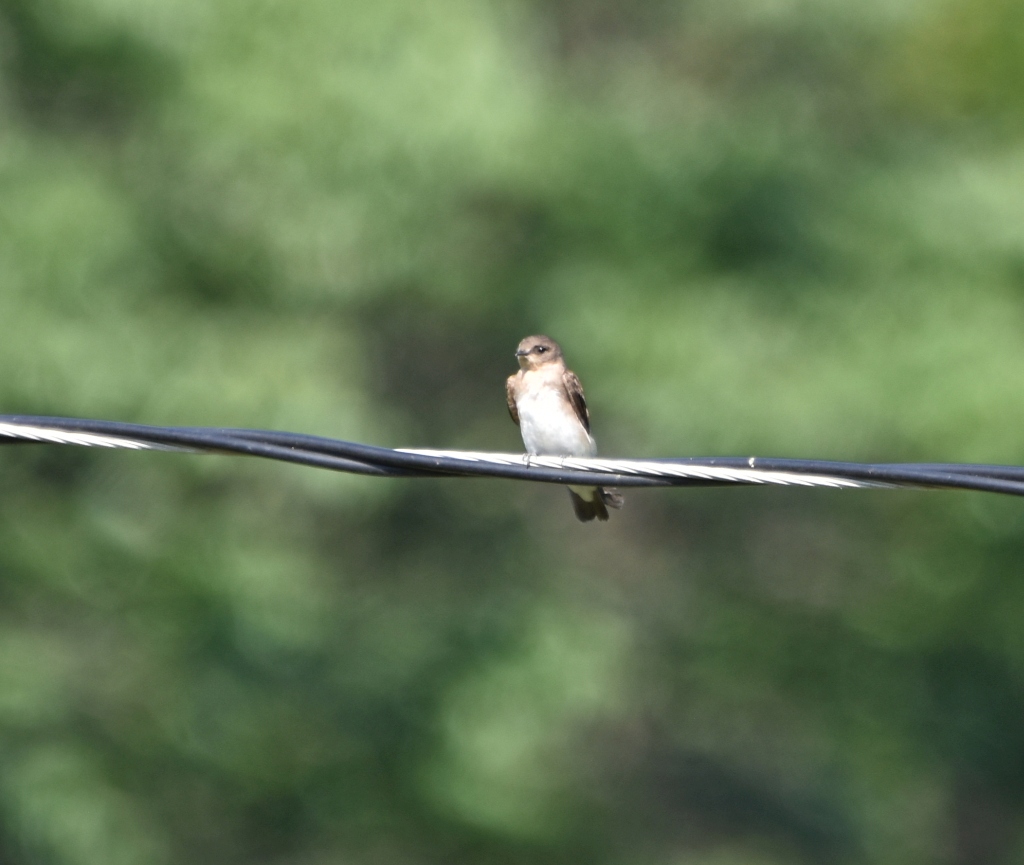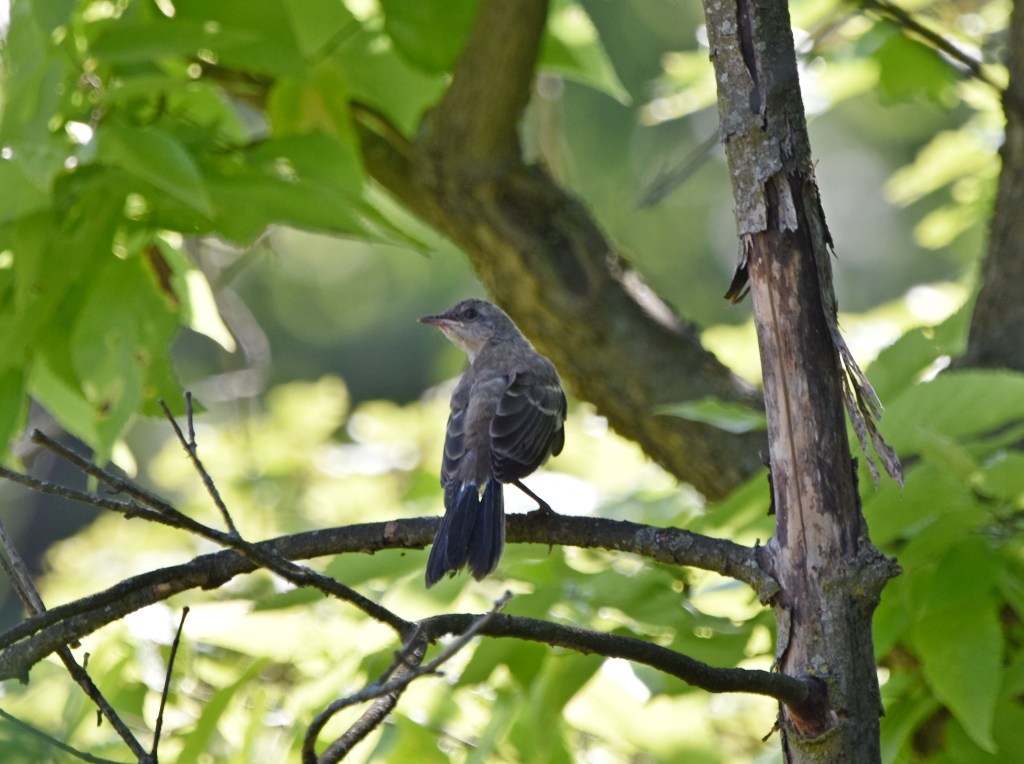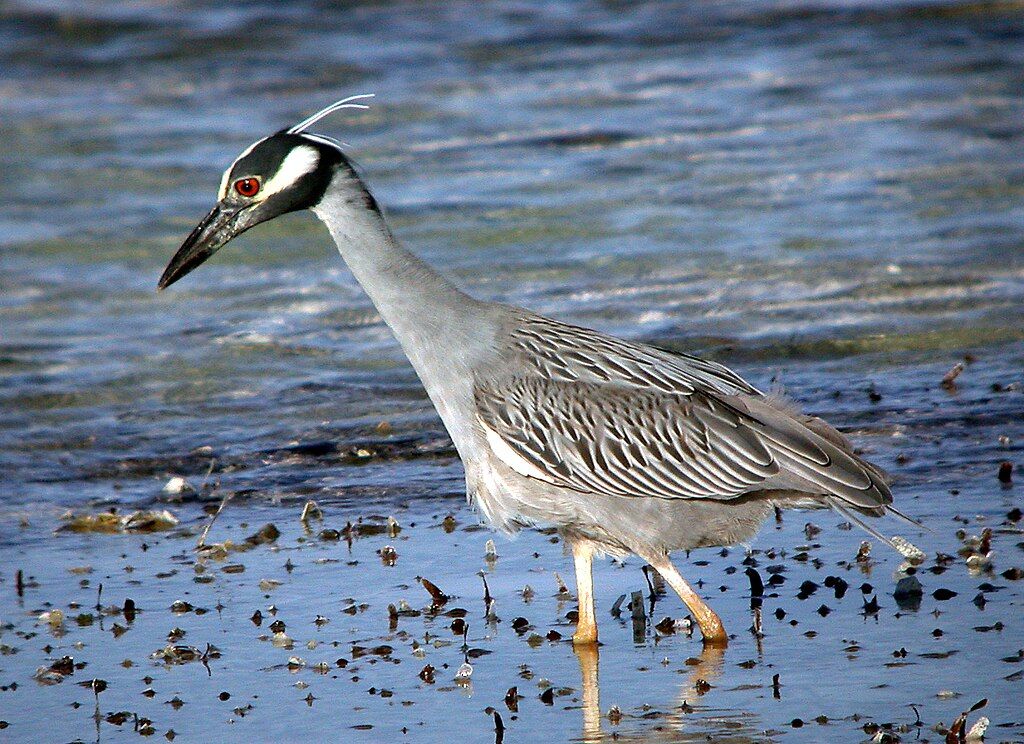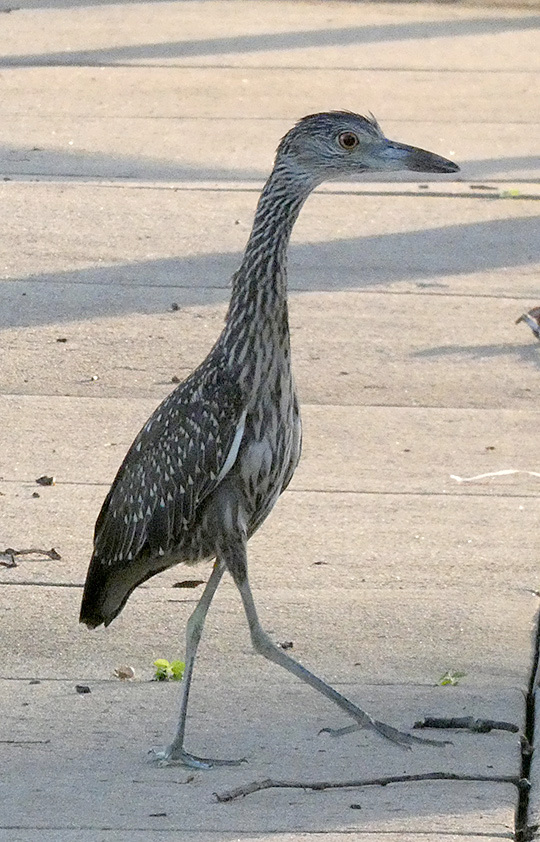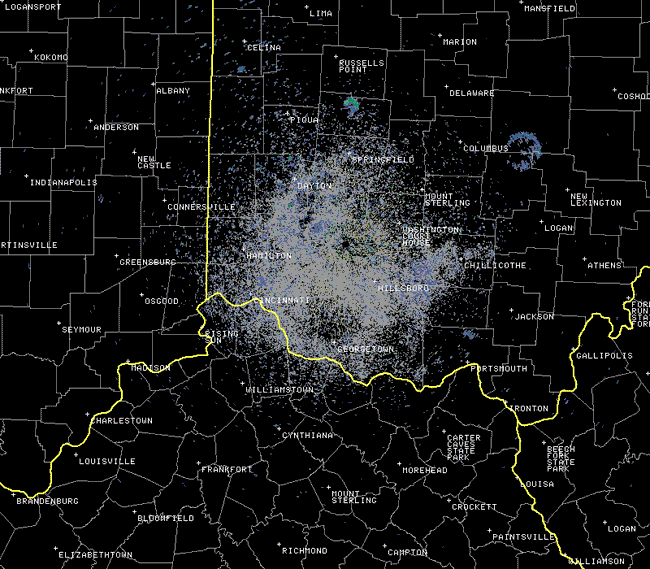
16 September 2024
Our largest swallow, the purple martin (Progne subis), has a very short breeding period in North America. In Pennsylvania they arrive in late April and fledge young in mid July.
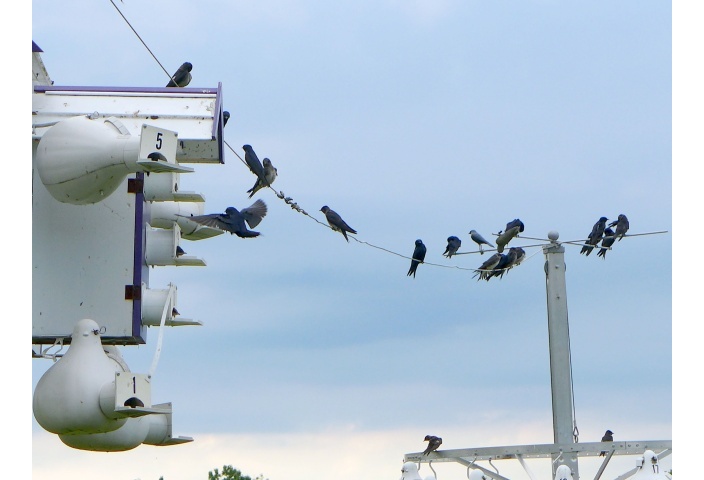
As soon as the fledglings fly well, adults and young leave the nesting area and spend their nights in a communal roost.
Flocking begins as soon as nestlings fledge; birds of all ages assemble in roosts before fall departure. This may represent nonbreeding activity rather than a specific response to upcoming migration, because the species is highly social and flocks in large roosts throughout the overwintering period.
— Birds of the World: Purple Martin
Since the breeding period is earlier in the South, roosts in the Carolinas fill up in July and contain so many birds that their early morning departure can be seen on weather radar. This happened last week in Wilmington, North Carolina.
Facebook post from NWS Wilmington, NC on 12 July 2024
The same phenomenon happens at our latitude in August, as shown on radar in Wilmington, Ohio at top.
Learn more about purple martin roost rings in this article from Wilmington Ohio: Roosting Birds Detected By NWS Doppler Radar and this one from Wilmington, North Carolina: Purple Martin Roost Rings on Doppler Radar.
